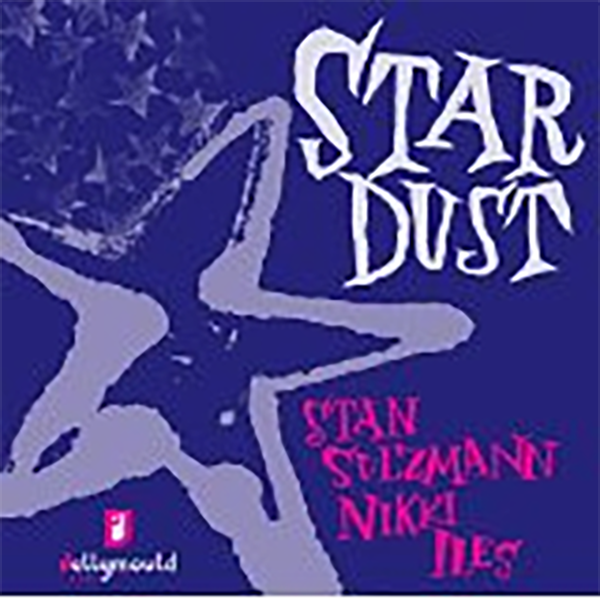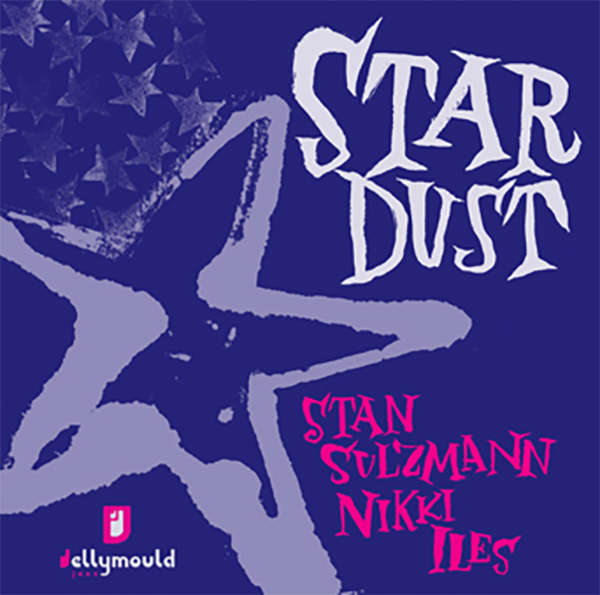

by Ian Mann
March 04, 2016
/ ALBUM
Every single nuance of the playing is captured and the almost telepathic rapport between Sulzmann and Iles shines throughout.
Stan Sulzmann / Nikki Iles
“Stardust”
(Jellymould Jazz JM-JJ020)
Saxophonist Stan Sulzmann and pianist Nikki Iles are two of the most respected figures on the UK jazz scene, although arguably both have probably received less recognition, from both critics and the jazz public, than they deserve.
Sulzmann, born in 1948, has been on the scene since the late 1960s and first came to prominence in bands led by trumpeter Kenny Wheeler, pianist John Taylor. A skilled and highly individual composer he has been leading his own groups since the 1970s and has recorded in formats ranging from duo to big band. In recent years Sulzmann has worked with a younger generation of musicians such as pianist Kit Downes and vibraphonist Jim Hart in the acclaimed Neon Quartet, originally primarily Sulzmann’s project but now a far more interactive and democratic ensemble.
Iles first emerged as a jazz pianist in the 1980s and made her recording début in 1992. She has led a number of successful trios and currently leads the acclaimed Printmakers group featuring vocalist Norma Winstone. Indeed Iles seems to have a particular affinity for working with singers and has recorded several albums with Tina May, some of these also featuring Sulzmann.
In 1994 Iles and Sulzmann recorded the duo album “Treasure Trove” and some twenty years later the opportunity presented itself for the pair to record in this format again. Both Iles and Sulzmann are acclaimed educators with permanent positions at the Royal Academy of Music and “Stardust” was recorded in September 2014 at the Academy’s Concert Room. It features a mainly standards based programme with just one original from each of the protagonists. When asked about the reasons for the song selections Sulzmann simply replied “I just love to play these tunes”.
Sulzmann and Iles each contribute liner notes which offer a few words about the inspirations behind each selection. The programme commences with Sulzmann’s own “Nikki’s Corner”, his dedication to his friend and creative partner on this project. The opening chords are based on Iles’ version of the standard “My One And Only Love” and Sulzmann notes that he was also inspired by pianist Bill Evans’ writing and playing on compositions such as “Some Other Time” and “Peace Piece”. Sulzmann specialises on tenor sax throughout this album and his playing is vibrant and fluent from the very start. His rapport with Iles is immediately apparent and their mutual respect allows plenty of room for individual, as well as collective, freedom of expression. There’s a delightful passage of unaccompanied piano from Iles, the first of several throughout the album. Sulzmann’s tune almost feels like a standard and thus fits superbly into the aesthetic of the album as a whole.
Iles’ piano introduces Albert Hague’s “Young and Foolish”, a tune that Iles remembers hearing on an album featuring Bill Evans with singer Tony Bennett. Iles and Sulzmann include the verse which was omitted from the Evans/Bennett version. This is another impressive duo performance with Sulzmann’s tenor probing intelligently, there’s a questing edge to his playing that ensures that the music never becomes mired in sentimentality, even on ballad performances. Iles piano solo provides a balancing lyricism but there’s always a degree of rigour about her playing too. This is a duo album that could never be accused of blandness.
The duo present Johnny Green’s classic “Body and Soul” as a true ballad with Sulzmann adopting a softer, breathier tone. He notes that his interpretation is inspired less by the famous Coleman Hawkins or John Coltrane versions than by Lucky Thompson’s version with bassist Oscar Pettiford. Meanwhile Iles demonstrates her characteristic lightness of touch during her solo piano passage.
Sulzmann seems to have come to Jerome Kern’s “Nobody Else But Me” fairly late in life, having been introduced to it by the comparatively youthful pianist/organist Ross Stanley. This interpretation was in turn part inspired by a version by organist Larry Goldings and guitarist Peter Bernstein. Sulzmann comments on the joyousness of the Goldings/Bernstein version and he brings something of this to his own playing which evokes a similarly spirited response from Iles.
I’ve previously alluded to Iles’ affinity for working with vocalists which perhaps explains her choice of Jule Styne’s “I Guess I’ll Hang My Tears Out To Dry” which she first heard sung on the album “Only The Lonely” by Frank Sinatra. The duo’s interpretation begins with Iles’ thoughtful and lyrical piano, subsequently joined by Sulzmann’s pure toned but emotive tenor in a genuinely moving ballad performance that simultaneously pulls and stretches at the fabric of the tune.
The Iles original “Under The Canopy” has previously been performed by the Printmakers group. Inspired by the nature documentaries of David Attenborough Norma Winstone’s lyric carries a strong environmental message. This instrumental version places the focus on the beauty of Iles’ writing with a strong melody and subtle rhythmic inflections inspired by Brazilian and Latin music but sounding much more European in this context.
Also selected by Iles is the duo’s compelling version of George Gershwin’s “My Man’s Gone Now” from “Porgy and Bess” which utilises the main theme but with a subtle re-harmonisation through the bridge. Sulzmann’s questing tone probes the heart of the tune in a commanding tenor performance that is complemented by a similarly assured contribution from Iles as the duo get right under the skin of Gershwin’s song.
Sulzmann brings a version of Burt Bacharach’s “You’ll Never Get To Heaven” which is inspired by the late Steve Gray who arranged a ‘double saxophone quartet’ of the song for the group Winds Of Change back in 1978. There’s a wistfulness about Sulzmann’s playing here allied to his usual intelligence and fluency. Iles is a sympathetic and responsive accompanist and shines on her own luminous solo.
The album concludes with the duo’s interpretation of Hoagy Carmichael’s title tune, also brought to the table by Sulzmann. He dedicates it to the memory of Alan Downey who arranged the tune for Cliff Hardie’s Big Band in 1977, a group of which Sulzmann was a member. Sulzmann plays this piece with a warm tone that speaks of a genuine affection for both the song and for the late Downey.
David Gleeson’s mix gives the album a warm, natural feeling akin to that of a live recording. However every single nuance of the playing is captured and the almost telepathic rapport between Sulzmann and Iles shines throughout.
As I’ve remarked before when reviewing a trio release by Iles (2012’s “Hush”) I’m sometimes inclined to dock half a star for albums that rely heavily on standards but the superlative musicianship and the sheer quality of these performances precludes this. Sulzmann has made previous duo recordings with the late John Taylor and with American pianist Marc Copland. However “Stardust” arguably rates as his best two hander to date.
blog comments powered by Disqus